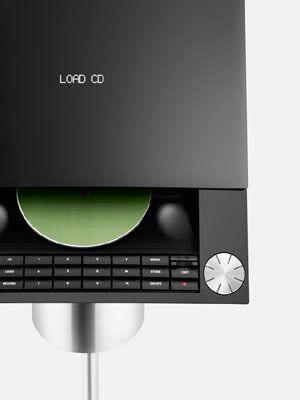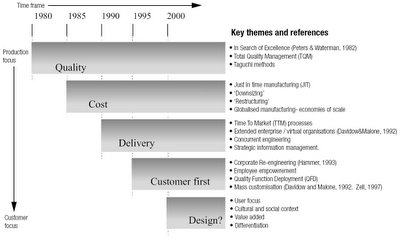Design Sojourn
Tuesday, December 27, 2005
Singapore Designers "lack identity"?
After reading this, my immediate reaction was defensive. I wanted to protect my passion and my profession, but stop myself short. I grudgingly replied “Yes it is, but its out of context!”
Here is the article reprinted just incase it gets deleted from the archives.
S'pore designers 'lack identity'
Friday • December 23, 2005
SINGAPORE'S ambition to be the design capital of Asia has suffered a dent with a recent survey that yielded less-than-optimistic views from industry players.
The 40 Singapore-based design professionals and experts surveyed rated Singapore's design hub status as "fair", and deemed Singapore design work to have "met the basic requirements", according to the report by Spire Research and Consultancy.
Most cited Japan and Hong Kong as better locations for design.
"Some believed Singapore possessed a pool of design talent with potential for development. However, none of the respondents were optimistic about Singapore becoming a design hub in the short-term," the report noted.
While more than half the respondents rated the quality of Singapore design work as reasonable and efficient, over 90 per cent believed that Singapore designers lack creativity and international exposure.
"A frequently-cited observation was that the work of Singapore designers reflected a lack of identity," the report said.
On a scale of 1 to 7, with 1 being the best, Singapore design output was rated 3.6 in creativity and 3.7 in aesthetic sense.
In terms of the "pure quality" of design work, Singapore scored 3.6, after Japan at 1.7, Hong Kong at 2.7 and just above Thailand at 3.8.
Some 60 per cent believed that the local design sector was young and more development was needed before Singapore could aspire to be a design hub.
Half of the respondents felt that the current education system neglected the arts, particularly at the primary and secondary levels.
They also felt that the Government and several industries should lend greater financial support by awarding scholarships to young talents. — Tan Hui Leng
Ok I asked myself, well I’m an industry player, and nobody interviewed me? Who were this 40 people anyway? If it’s a general industry assessment, I must agree, but has the reporter not seen the recent International Architecture and Design awards Singaporean designers have won?
But jokes aside, I like to point out a couple of things that this article failed to indicate. Really this write up is very one sided, and out of context by the way Singapore was marked with other countries.
Singapore only started this design hub initiative in Aug 2003 with the launch of the Design Singapore Council by MICA (Ministry of Information, Communications and the Arts). So looking at my calendar this initiative has only just turned 2 years old.
Japan on the other hand can trace its design roots all the way back to the 16th century. Japan as a culture is so much older compared to Singapore’s 40 years of independence. So considering that we have been doing this for only a short time, scoring and average mark on that 1 to 7 scale in creativity, aesthetic sense and quality is pretty damn good if you ask me. Honestly I wonder if these so call “experts” interview were misquoted?
"A frequently-cited observation was that the work of Singapore designers reflected a lack of identity," the report said.
Again what is this article saying? Are we to run before we can even walk? I recently attended a meeting with Design Singapore Council advisors where we discussed this very topic of “Does Singapore need a design identity?” In many cases, a design identity reflected in products such as the ones found in German cars, Swiss watches, and Japanese electronics, are carefully crafted initiatives that are a reflection of a positive culture characteristic with a global appeal. In every case they were both nurtured and marketed but never created or induced artificially. We all agreed at the end of that day, a small group of people cannot create this identity; it is one of a collective cultural nature.
Hey some people had 400 years to develop their cultural identity, we had just 40 years. As Dr Evil always says “throw us a freaking bone, why don’t you?”
At least Singapore did not stop and are still looking for it. Every year at the Miss Universe pageant, I am always interested to see, no not Miss Singapore, but the Miss Singapore cultural dress. And every year we still have some atrocious design that is paraded around the floor. I’m glad as this means we are still looking for that illusive cultural identity and hence design identity.
Some 60 per cent believed that the local design sector was young and more development was needed before Singapore could aspire to be a design hub.
This is my biggest beef with a lot of the harshest critics of the local design scene. They always bitch and moan about how they can’t find any good local designers and must hire from overseas. Yet they don’t do anything to improve the local scene or foster local talents. And believe me I’ve seen many diamonds in the rough.
That is also my main worry when I hear all the big names such as Lucasarts or BMW Designworks coming to Singapore, will they actually hire any locals? Honestly, if they have the chance, I think not. I’ve work in MNCs before and that never is the case, unless you are truly an exceptional local talent. I’ve seen many local guys passed over for foreigners who are really no better except having better exposure. Some foreign designers I’ve worked with are down right crap, they just talk good.
This leads me to the final rant, exposure and the local education system. Well I’m not sure when these people were interviewed, but I have seen many native Singaporeans who graduate from overseas universities with overseas work experience applying for jobs in Singapore. How exposed to we need to be? We travel more now, and with the internet the world is a smaller place? Furthermore in the recent 3-4 years I have seen many people opting to do design when they could have been a doctor or lawyer because of their A level grades. Kudos to them!
Really, it’s a matter of time, and though we are not running, we are not walking as well.
Wednesday, December 21, 2005
Copulator, a what?
What a waste of a good talent. Well at least you will know if your chairs dont stack correctly!
Tuesday, December 20, 2005
Parking

Check out this really cool and innovative use of space conceptualised by the Rebargoup.
This could be an interesting concept for the urban jungle that is Singapore.
Monday, December 19, 2005
A Good Design Makes your Mind BLINK!
Here's the link.
Here's John's influence.
I may need to pop down to MPH to see if they have that book...
BBD Part 1: Just Do it!
In this first installment we focus on “Just Do it!” Getting to work I mean, from our point of view, getting right into the sketching. I know we have discussed about “reflective” stops and thinking about what you are doing. But “reflective” stops assume that you are some where in between or have already started your concept development work.
In the standard design process, often a design brief is laid out or an initial research phase is done as one of the first steps. After this has been done, I have seen many designers, suffer from analysis paralysis, or just stunned in the scope of the work that they have to do, so much so that they do not know where to start! Subsequently many designers tend to work out the design concepts or idea in his or her head. This is extremely difficult to do efficiently as a person’s general mental capacity has only a limited space available.
Just like making a To Do list, pick up a pen or pencil and start sketching! Get in there, don’t wait! This moves the idea or concept from the mind and on to the paper, freeing up mental storage space. Once you do that you will find that you can think clearer and better.
The act of starting is also difficult for many, especially when you are faced with a huge blank piece of paper. What I suggest is warm up by drawing a few horizontal lines, or little thumbnails. Also sketching buttons are my personal favorite way to warm up. Once you have turned this into a habit, it will be easy to just bang out the sketches.
Finally, the act of designing is making an intangible idea into a tangible object. This is in itself is a difficult task, as there could be many solutions to a design problem. The question is often “which is the best solution for the problem on hand?”
In many cases, if the solution is thought up exclusively in the mind, it’s often not the best solution. Visualization skills, just like sketching skills, need to be developed especially in a young designer’s career. The best design solution that solves the design brief often comes when you have considered all the options. Getting your sketches on paper is essentially that, listing out all the options. From there it’s easy to apply your design sense and ask yourself if this sketch solution is “logical” or not!
Thursday, December 15, 2005
Design Theory Pt 2: Is this logical?
Fortunately in many ways this "design sense" can be developed just like drawing ability or learning to ride a bike. One good way, as part of your mental "reflective" stop, is to simply ask your self
"Is this logical?"
Logical is terms of everything:
"Is this a logical line?"
"Is this a logical form?"
"Is this a logical solution?"
"Is this a logical target market?"
"Is this a logical position for a button?"
I think you get the picture.
The best designs are logical and logical in almost every aspect:
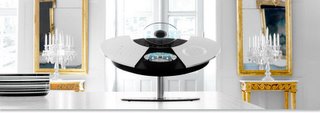
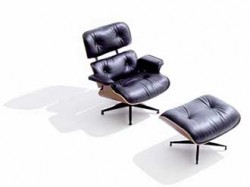


Often in the complex world of industrial design, we are faces with many constraints. These constraints can come from branding requirements in design language, engineering aspects, marketing and even a designer's philosophy. All this jumbled up in our melons at the top of our shoulders have a tendency to over load our mental faculties. This often causes us to lose sight of the big picture, and we end up doing stuff against our inner design voice. Or just doing things that just does not seem right
In many ways that's the difference between a designer and non-designer who appreciates design. A designer identify and correct the different aspects of a bad product. A non-designer will know that is wrong, but will not be able to say what it is.
So stop, and ask your self, "Is this logical?" so to bring yourself back in touch with your innate design sense. Because it is the type of situation that if you do it people cannot tell the difference, but if you dont, everybody will know.
Unsung heros, are we not?
Friday, December 09, 2005
Why i hate digital media? Part 2
So now lets have a quick look to see where we are today with some "post-pc era" products.
Philips Media Centre HTS
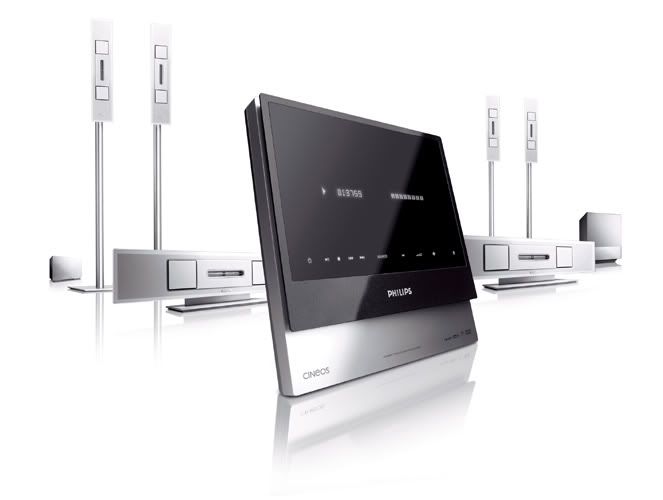 This is the second product in Philip's foray into the digital media center home entertainment system (HTS). Looks pretty good. If we used the first version as a basis for discussion , the system has a lot of functions (internet surf, Mp3, Movies, photos etc.) and can almost be seen as a normal "PC" media centre converted into an interior object. Sort of a more lifestyle version of Mac-mini. However as they removed alot of the interface devices like keyboard or mouse, you would still need the help of a PC to get and manage the information in the system. That being said you should be able to rip music from your CD directly into the built in harddrive.
This is the second product in Philip's foray into the digital media center home entertainment system (HTS). Looks pretty good. If we used the first version as a basis for discussion , the system has a lot of functions (internet surf, Mp3, Movies, photos etc.) and can almost be seen as a normal "PC" media centre converted into an interior object. Sort of a more lifestyle version of Mac-mini. However as they removed alot of the interface devices like keyboard or mouse, you would still need the help of a PC to get and manage the information in the system. That being said you should be able to rip music from your CD directly into the built in harddrive.The system also streams, via Wi-Fi, digital media content to other small "waystations" that you could put anywhere in the house. However if its anything like the first generation system I reciently saw, it suffers for Wi-Fi drop out which leaves the user wondering if he pressed the right button or not.
Conclusion: Still needs a little help from the PC.
Easy to use and set up—It takes just a few minutes to install: simply load SlimServer, our powerful and free Open Source software, onto your computer and connect the player to your network. Squeezebox automatically configures itself and is ready to use.
Nice design and a cool package. But in terms of post-pc product, its not quiet there yet. This system basically plays off the computer's content, and can be thought off as an extension of a PC. Nice idea, but it assumes you have some knowledge of the PC environment, as you need to set it up. After that the device can connect your MP3 on your pc's harddrive to any other device in the house.
Conclusion: A cool but complex PC add on.
The Beo4 is a CD player, FM radio and has an SD slot. If you’d like DAB radio, you can get it factory fitted as an option. B&O says this is the first audio system of its kind to be able to record music from a radio or CD to the SD without a computer
From the Gizmondo rumour mill. If this product is true and sold, it will be one of the few, that actually focuses on the creation of digital media, and playing it thru removable media. Another one is the Teac CR-H255. As it has no harddrive in the specifications or PC connections, we can assume the system it targeted to people who have the original CDs, andwant to digitize your collection.
I like this format because I can mange my collection via flash memory chips and the ability to move it around to various other devices, if necessary, like say the Beo3 clock radio (left image). The downside, is it looks to be only a task specific music system (a start of a trend?), and probably not play Divx. Take a look at the Beomedia 1 for that visual media angle.
Conclusion: Targets non-music downloaders, but music-downloaders can find a place too.
Internet Radio – Listen to thousands of free Internet radio stations from around the world - one-touch access to talk, jazz, rock, pop or your old home town favorite! You do not need a computer to listen to Internet radio; you just need broadband and a Wi-Fi home network.
This is currently the closest product we can get for avoiding the pc middle man. This internet radio, connects directly with out a computer. Notice also its a pretty task specific product, and it does the job well.
Conclusion: As close as it gets, but as expected it suffers from limited scope.
Ok, thats it for today, stay tuned for the next digital media installment where we look at a little more of the aspects of ditigal media that influences the human psyche.
Thursday, December 08, 2005
Design Theory Part 1: Reflection
Today we start this new series on theories on how to possibly create better designs. I think central to successful design thinking and even to this series as a whole, is the concept of reflection. Looking back and onto one's self.
Often designers power away at a concept sketch, 2D rendering, 3D CAD racing to the end to meet many datelines. After that they jump on to the next project without much thought. Whether you are a student or a professional, time or the lack of it, is a common factor. This should not prevent you from reflection. There are many opportunities for reflection; one of my favorite places is in the shower.
What I do urge designers to do is occasionally STOP. Stop during the design production process, as well as after the end of the project to reflect on what has transpired.
This act of stopping to think and reflect is vital for personal growth as well as good design, as you can access if you are doing the right job, or doing the job right.
Wednesday, December 07, 2005
President's Design Award
Technically by the dictionary definition it is correct, a designer designs. To design is to create, and Eric Khoo creates something and thus could be called a designer. Unfortunatly this will lead to a whole load of confusion, espically to a public just beginning to understand design.
I think the discussion here is two fold. First is the sope, the second is the title.
In terms of scope, we need to be careful, by recognising the people who is responsible in creating the actual design. Reciently there was an article in the newspaper about Singapore 10 most promising designers. One of the gentlemen features was from Ogilvy & Mather Worldwide. My question was not of his credentials but of how close was he to the actual creation process of a ad compaign? I'm sure he leads in overall strategy, but I'm sure there are a lot of creative copywriters and graphic designers that made the ads a reality. My gist is that there are many people involved in the design process, so what aspect do you own, and at what level is this award directed to?
The next that could make this distinction easier is the title and name of the award. If you win a design award means you do design, or a designer by profession. So what is a designer? In this day and age, even though "design" is a verb, being called a "designer" or doing design is tagged to a professional title, such as Graphic Designer or Industrial Designer. It should like all professions should be given the respect that it deserves.
Fortunatly or unfortunatly, it covers only just these few professions (Interior, Graphic, Industrial, Interface, Web, Multimedia etc). The other prominent creation type professions has its own professional title. I believe Architects would not like to be called "Building Designers". I dont think copywriters like to be called "Sentence designers". Or Eric Khoo, be called a "Film designer". What about Accountants being called "Number Designers"?
The list is endless, perhaps by my 2 cents worth, change the name to The President's Creative Award? At least it a much more clearer blanket statement that covers all aspects of the creativite industry. Please not "design", as we know how confusing the term "design" has become.
Tuesday, December 06, 2005
Everybody is talking about design.
Check out a graphic I got from the Design Management Journal about the new new in organisation management trends.
But is it really about design or just being creative? The chart above focuses on companies who create products and how they use design to differ themselfs and get ahead. But there is growing evidence that the term "design" or "designer" is used to in a too generic manner.
1) Is it design or creative management?
I nearly fell off my chair when i found out that Tom Peters, a well know management guru, is also telling designers how to be designers, when he is not even a designer himself! This again is creative management and change strategy?
Tom Peters on Design49Dont get me wrong, I'm a big fan of Tom and a big inspiration in my growth as a manager, but this is like saying "Well I currently have a licence to drive a car so I can definitly drive a truck!" I feel sad that even him is jumping of the "design" band wagon rather than staying true to his creative management work.
Prepared for the Better by Design Conference in Auckland, New Zealand, March 2005.
2) Is this design or creative thinking?
After reading about Innovation vs Design at businessweek online, I was further intrigue about the general and liberal use of the word "design" and how its being intermingled or used interchangeably with "innovation".
At the recent IDF 2005, here in Singapore even all banding people are jumping on board. Jez Frampton from Interbrand indicated how "firms want to revolutionises by turning design oriented". I asked my self, even companies that dont sell products? Maybe its just me, but i have associated design with something tangiable like products or logos not services! The presentation went on to describe how every aspect of the communications strategy is "designed" including the way you answer the phone. I suppose if you put it that way, you could "design" a way to answer the phone. That comment made me a little afraid.
I got even more afraid when i read that design is really used to describe non-tangible things like processes. In Innovation is the New Black , Michael Bierut wrote:
"The new stars of design work on rather nebulous, intangible things such as services and business models. They collaborate, so it's difficult to see where their authorship begins and ends. And their arrival has caused toxic shock to the design world, resulting in an awful lot of bad feeling."As an example:
There was a big outcry when the Council gaved an award to Hilary Cottam for her work in applying design principles to solving problems in health care and prisons. And Vicky Richardson, editor of Blueprint, has said that what people such as Cottam and Thackara do is strategic planning and should not be confused with design. 'Calling it that reflects the fact that design is very popular. It suggests to me an aspiration to be a certain kind of creative.'Ooh what a high brow but interesting statement!
If you want to talk about "Design and Strategy" it has been around for a long time, and we all know "Good design is good business". Refering the the chart at the top again, the companies like Nike who deploy it on a strategic decision making level are winning in todays consumer product race. It is this move from "Design" as being just surface aesthetics, to strategic design that I thinking is causing the confusion. This different positioning of design thinking towards a more holistic level is what I would define the innovation part.
The other confusiing part comes from the nature of organisations, when you need "titles" to define your job scope, as I've not heard of "Innovation Executive" (cool title eh?), design managers have been the traditional facilitators of strategic design in the board room. So when a non-designer jumps onboard, designers get a little defensive and start to protect their turf. (Like me vs Tom eh?)
3)Is this design or innovation?Continuing from Innovation is the New Black Michael Bierut nicely summed up this debate:
...although innovation is always good, it isn't always effective. "We all know that reliable methods of innovation are becoming important to business as they realize that 96% of all innovation attempts fail to meet their financial goals...But thank goodness, a solution is at hand: "Business leaders are increasingly looking to design to not just help, but lead their innovation processes." So we come full circle. Don't say design, say innovation, and when innovation doesn't work, make sure you saved some of that design stuff, because you're going to need it.
4)Is this design or confusion?
I agree with Bruce Nussbaum and Niblettes, and I'm glad design starting to come to the forefront as an accepted profession, skill and capabilities. But we need to define what it means, and in particular we should call a profession for what it is. Call it my pragmatic self, but if we are going to be a respected profession such as a doctor, lawyer or accountant we need to some how find a way to name or classify the design profession correctly. If the design profession continues to be associated with some fluffy airy job scope, its going to be difficult to relate it to tangible aspects like money, or how much a design is worth, or ultimatly how much we should be paid as designers.
Monday, December 05, 2005
Be a Better Designer and Design Theory Series
So I've decided to start a little series to help the budding designers. The first "Be a better designer series" focuses on insider tips on how to improve as well as how to streamline the designing process by improving quicker thinking and design production skills.
The second "Design Theory Series" focuses on some of my personal theories of how to create better designs.
So stay tuned!
Singapore Design Festival
 Well its the end of the the inaugural Singapore Design Festival, that ran from from 9 to 23 November 2005. I must say a great back slapping "well done" and a round of applause for the team at Design Singapore who manage to pull it all together.
Well its the end of the the inaugural Singapore Design Festival, that ran from from 9 to 23 November 2005. I must say a great back slapping "well done" and a round of applause for the team at Design Singapore who manage to pull it all together.Like most of the design festivals I have visited, the satellite exhibitions were the best. Some of our favourites were at the Ann Siang Hill area, they included Asylum and Style: Nordic. However one of the main exhibition features at Ann Siang Hill are the really nice and well preserved Peranakan Shop Houses. I have a strong feeling that that area is going to become one of the creative centers of singapore. My dream is one day have a design studio in one of those wonderful shop houses.
The 20:20 exhibition showcasing the latest design talents at the spanking new National Library of Singapore, as well as the new Red-Dot Concept Award at the Red-Dot Museum were all great exhibitions housed in really interesting Architecture.
However what was disappointing were the two main events. The International Design Forum 2005 and Design Edge.

The IDF 2005 focused on driving business growth by design. But what it degenerated into was a platform for design consultancies to show off their portfolios in the hope that local clients would bite. Annoying particularly because you paid SDG$ 800 per person (early bird group discount) of cold hard cash to attend this forum, when you could easily invite said consultancies to visit you and do their marketing pitch for free. Of cause there were some gems like: Ravi Sawhney's "Design - What every business needs" Link to slides, and one of my favs Dick Powell from Seymour Powell on : "Better by Design".
But in general the design consultancies were pretty boring, with nothing new to show. Even IDEO was just a tired showcase of products you could have easily seen on their website, the worst was by far the design consultancy from india.
Essentially if you took a helicopter view most of the design consultancies on show that day all took similar approaches in design methodology, they just called it in different names, and all focused on creating and communicating that "Big Idea or Concept".
I think most Singaporean businesses or design related organisations at that conference are mature enough or already know the value and the need for design in a business context. (Thanks to in no small part to the efforts of the DSG!) They just dont need it being told to them over and over again. What we needed more that day were presentations from companies that have used strategic design sucessfully and how they want about doing it. What we needed were more of the kick ass presentations done by Nike and Virgin.
What we had were vague keywords, implacating the said design consultancies, and hinting that to know more we should have a chat. I left that day feeling like i just ate a bad hokkien mee. Full, slightly sick, but generally unsatisfied.
 On now to the next big event. Organised by the famed IdN magazine, this expo was ment as a show case of designs and designers taking their art to the edge and back.
On now to the next big event. Organised by the famed IdN magazine, this expo was ment as a show case of designs and designers taking their art to the edge and back.For $35 bucks what we got was a half empty hall, occupied by mainly seats, and small pavallions showing graphic works from many invited artists. Nothing again you could not find on the internet, or seen before. There was no free tote bag, nor booklet, sticker or toy for that $35 entry fee, mind you its for a single day pass! I find this cost pretty prohibitive to only the dedicated and interested.

In typical IdN style we had mainly toys, and more toys, street ware and graphic works. Not to mentioned the strategically placed (at the exit) IdN shopping booth.
I left the show feeling a little jaded. The IdN booth which was bustling and made me feel this was more of a sales event to flog IdN products, and the high entry fee was to cover the rental of the suntech location.
At least I manage to pick up a cool stikfas toy thanks to my buddy banyJ!
So what do you guys think of the festival?
Friday, December 02, 2005
Are you a blog slut?
Haha, how many of you have more than one blog? I actually have 3! One here, one at Xanga and one at 1up.com. Updating them is a nightmare. Just to much to write. I cant decide if i should just focus on one, or just update all at the same time as invariably they will all contain the same
The interesting thing is the internet and technology in general allows the power to the people, the power to choose, and the power of
But with so many people online it has become so diverse, how do we know what is good and what is not? That’s where “Collective Intelligence” (Time, Nov 14, Pg 40) comes in. How do I know what is a good blog or what is not? Many sites like Google, Flickr, tomorrow.sg and del.icio.us, sort out the noise and filter up to the surface the links more commonly viewed by people on the assumption that more commonly viewed = good.
But interestingly enough, as we become more globalize and diverse we can yet be more insular. Look at online dating (Time, Nov 14, Pg 41), and membership only discussion forums, we can now pick and choose who we want to talk to.
Such “homogeneous clustering” of interests groups that are popping all over the place, is a common thing in society. High class fashion shows vs. middle class soccer games ring a bell? But on the internet, if you have an interest in say “life-like human dolls”, you can find like minded individual and support groups so you will not feel out of place. The great thing as Malcolm Gladwell said:
“…there are many different clusters being created all at once, and the overall effect can be to increase diversity…but there are 10 me’s (clusters).” (Time, Nov 14, pg 41)
Every body’s multi-sided personality can now come out and be embraced one at a time…
Design Translator the Designer
Design Translator the Gamer
Design Translator the Painter
Design Translator the Novelist
Design Translator the Film critic…
So i guess my multiple personality is somewhat justified!


